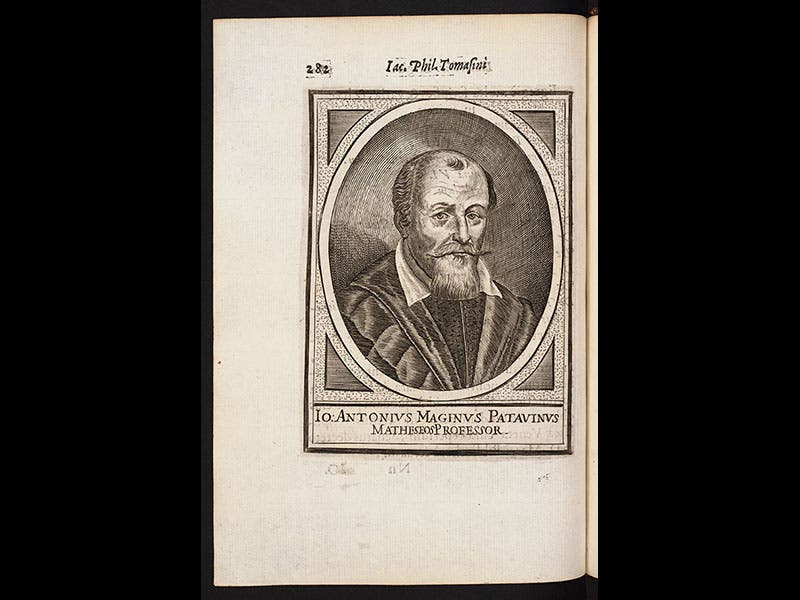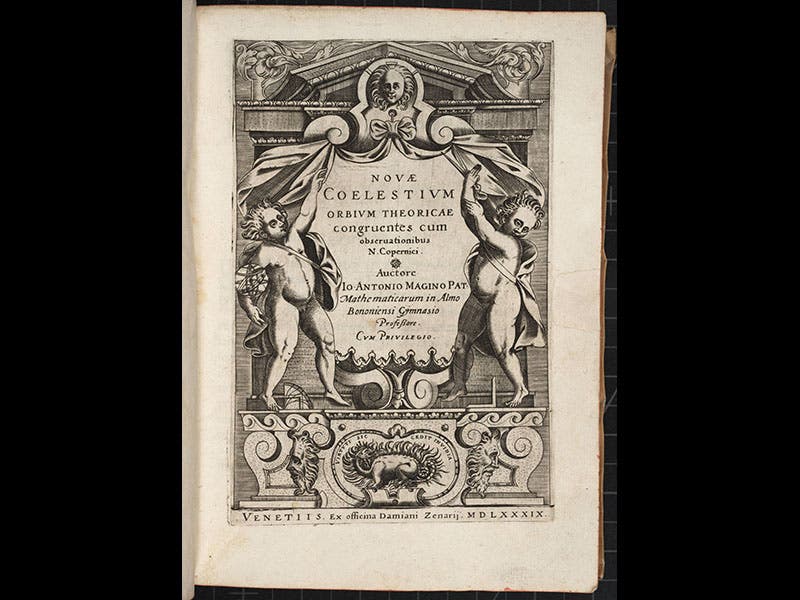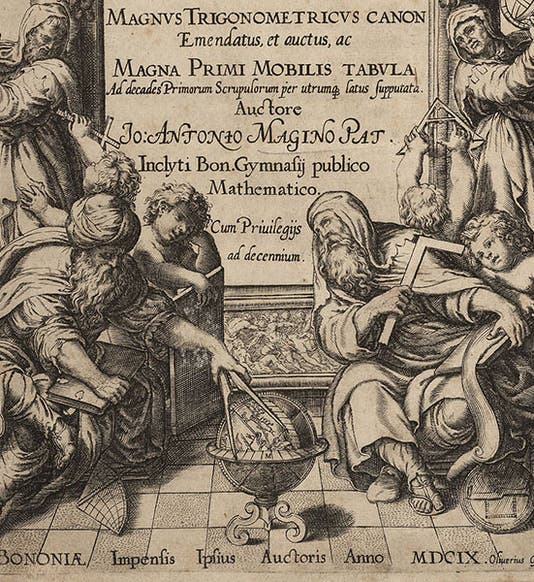Scientist of the Day - Giovanni Antonio Magini






Giovanni Antonio Magini, an Italian mathematician and astronomer, was born June 13, 1555. He is known mainly for being appointed professor of mathematics at the University of Bologna in 1588 instead of the other principal applicant, Galileo Galilei, as if this were somehow an absurd choice by the university regents. In fact, Magini had already published two important astronomical books by 1588 (Galileo had published nothing) and was nine years senior to the 24-year-old Galileo, so his selection was a perfectly sensible one at the time.
Magini published mainly astronomical tables and ephemerides, which were rather like professional almanacs that provided planetary positions for the next several decades after publication. Most of the titles of his publications include the phrase "secundum Copernici hypotheses" or "secundum Copernici observationes"--"according to the Copernican hypotheses [!or!]"--which seems to suggest that Magini might have been an early convert to heliocentric astronomy. But he was not--he simply liked the tables that had been computed by Erasmus Reinhold from Copernican parameters--the so-called Prutenic Tables--which Magini then updated and converted back to a geocentric system.
Magini’s tables were very popular and were often updated and reprinted by Magini himself. We do not have his first two publications in our library, the ones that won him his job at Bologna (1582 and 1585), but we have three later editions of these, and since they all sport an engraved title page, we show the title illustrations above. The title-page engraving for his Primum mobile (1609; third and first images), depicting a varied collection of ancient astronomers and mathematicians, is stylistically one of the finest compositions of the first half of the century. We also own Magini’s most important cosmological work, Novae coelestium orbium theoricae, published in 1589 (sixth image), which must have confirmed in the regents’ minds that they had made the right choice in selecting their new professor.
The portrait of Magini that we reproduce above (second image) is from a rarely cited portrait book of 1630, Giacomo Tomasini’s Illvstrivm virorvm elogia iconibvs exornata, which provides images of famous people who either came from or came to Padua. Interestingly, Galileo, who taught at Padua for 18 years, was excluded from this compilation as well.
Dr. William B. Ashworth, Jr., Consultant for the History of Science, Linda Hall Library and Associate Professor, Department of History, University of Missouri-Kansas City. Comments or corrections are welcome; please direct to ashworthw@umkc.edu.






